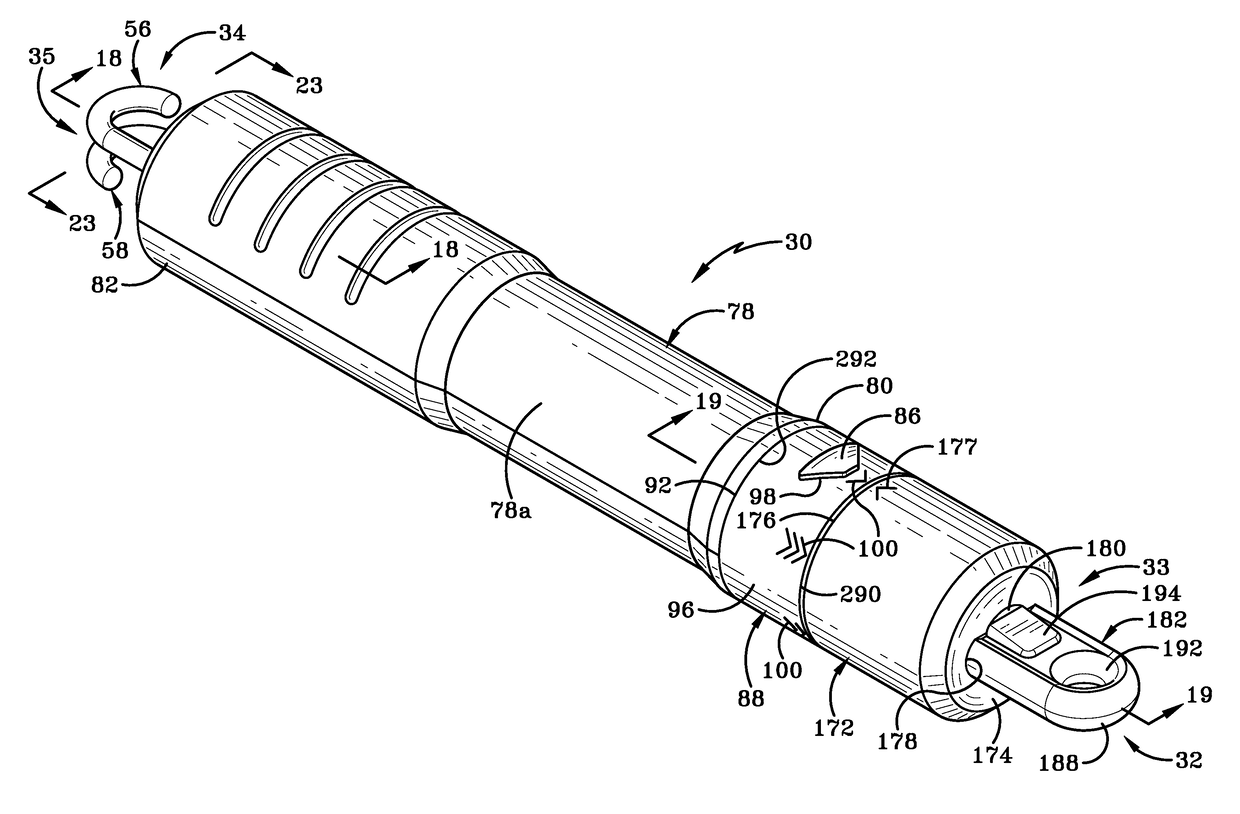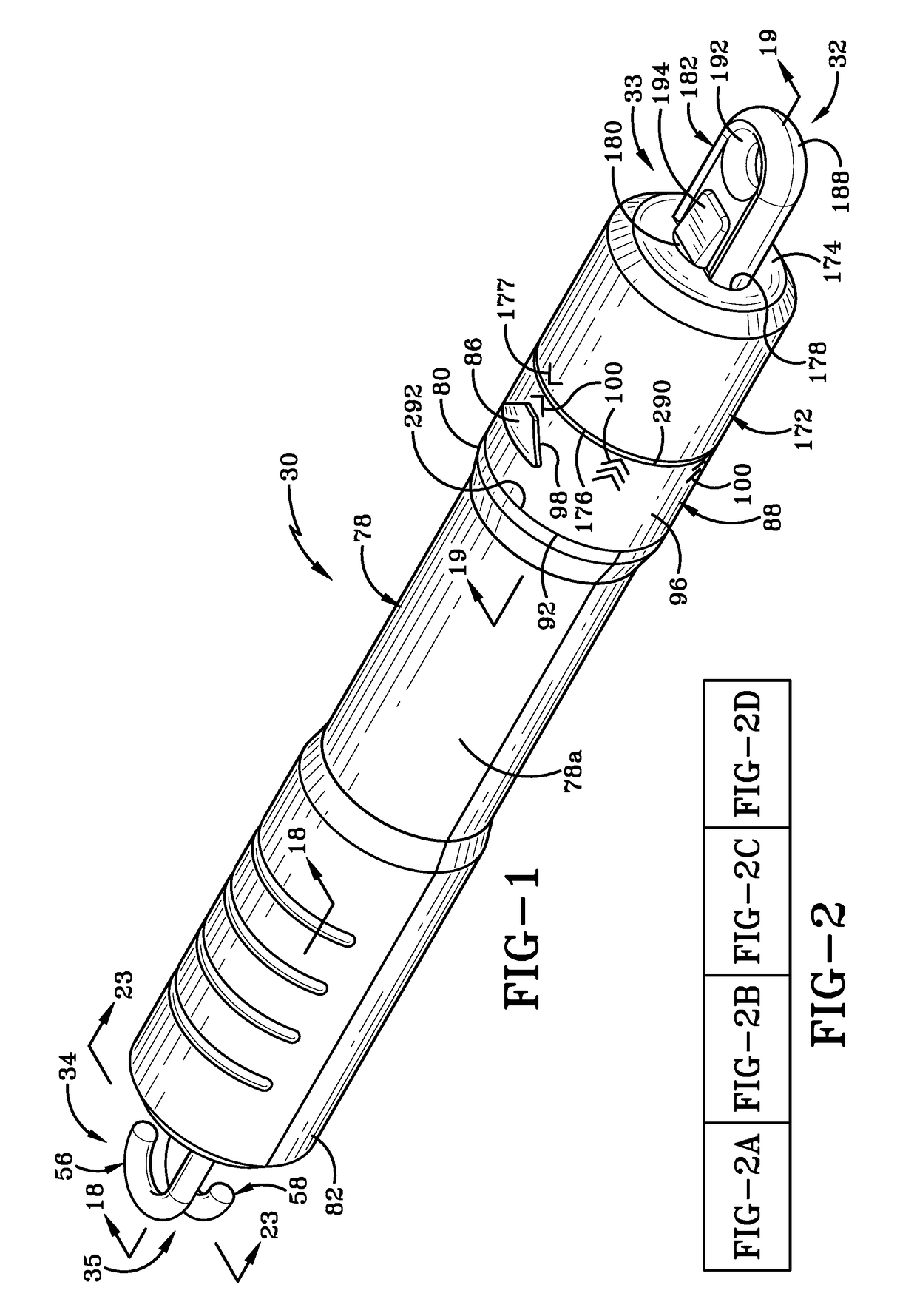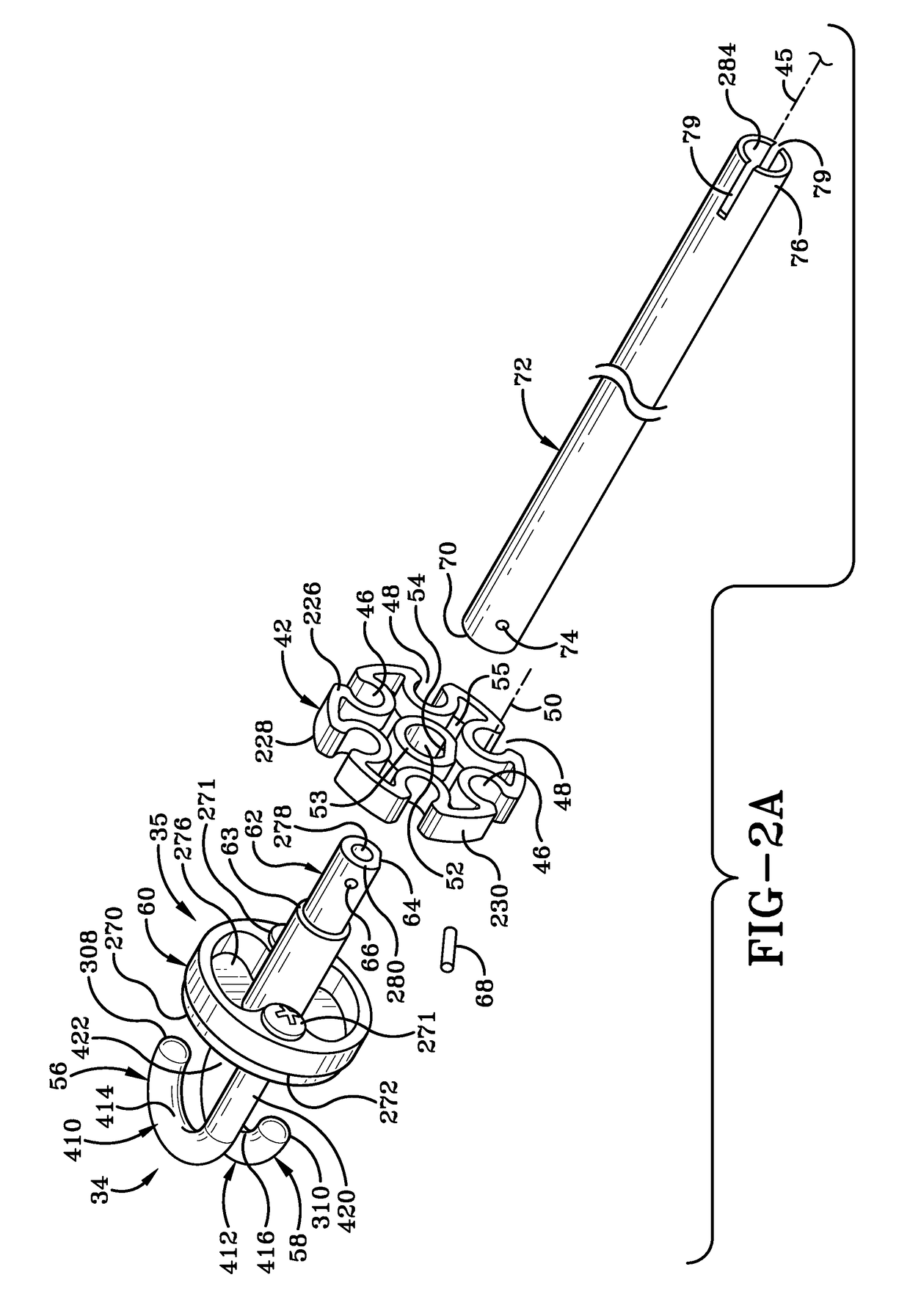Resistance band assembly and a method of varying a resistive force applied thereby
a resistance band and resistance technology, applied in the field of resistance band assembly and a resistance band variation method, can solve the problems of inability to adjust, inexperienced users or too ambitious people may inadvertently injure themselves, discourage people from undertaking a full exercise routine, etc., to achieve easy adjustment, and increase the intensity of the workout
- Summary
- Abstract
- Description
- Claims
- Application Information
AI Technical Summary
Benefits of technology
Problems solved by technology
Method used
Image
Examples
first embodiment
[0240]Fifth arm 523 is a generally U-shaped member that is mounted on exterior surface 538b of support member 538 by way of a mounting bracket 596. fifth arm 523 is shown in FIG. 40. Fifth arm 523 may be mounted on support member 538 at a level that is aligned with approximately midway along length of first slot 544. Bracket 596 secures fifth arm 523 to support 514 in a fixed and unchangeable orientation. Fifth arm 523 may be oriented so that it is substantially horizontally mounted and is generally parallel to upper surfaces 524a, 526a of first and second base members 524, 526. A cushioning grip 598 is provided on each end of fifth arm 523. Fifth arm 523 may be used as a dip bar for performing triceps dips or other similar exercises.
second embodiment
[0241]FIG. 43 shows the first arm, generally indicated at 616. First arm 616 may be adjustably mounted to support 514. In particular, the distance between first arm 616 and base 512 is selectively variable by moving first arm 616 toward or away from base 512. First arm 616, like first arm 516, is generally U-shaped when viewed from above and comprises a first section 616a and a second section 616b. First and second sections 616a, 616b are substantially identical to each other and are mounted in such a manner that they are mirror images of each other relative to support member 538. Each of the first and second sections 616a, 616b is generally L-shaped and comprises a generally laterally extending first arm portion 656 and a forward extending second arm portion (not shown in FIG. 43 but substantially identical to second arm portion 558). First and second sections 616a, 616b may be generally circular in cross section.
[0242]A clamping assembly 660 secures each first arm 656 to support m...
third embodiment
[0250]FIG. 44 also shows the first arm, generally indicated in this figure at 716. First arm 716 includes additional attachment members 778 which may be provided at intervals on one or more of bottom, top, and rear surfaces of first arm 716 as well as on the front surface thereof.
[0251]In accordance with another aspect of the invention and as shown in FIG. 44, attachment members 801 may also be provided on upper and / or lower surfaces of shaft 800 of fifth arm 723. Some type of resistance band (not shown in these figures) may be engaged between any selected attachment member 801 on fifth arm 723 and any selected attachment member 778 of first arm 716 to increase the resistance to the pivotal motion of fifth arm 723 as indicated by arrow “K”. This increased resistance may be desirable as a user gets fitter and stronger.
[0252]It will be understood that substantially all of the first, third, fourth, and fifth attachment members are illustrated herein as being spaced at regular intervals...
PUM
 Login to View More
Login to View More Abstract
Description
Claims
Application Information
 Login to View More
Login to View More - R&D
- Intellectual Property
- Life Sciences
- Materials
- Tech Scout
- Unparalleled Data Quality
- Higher Quality Content
- 60% Fewer Hallucinations
Browse by: Latest US Patents, China's latest patents, Technical Efficacy Thesaurus, Application Domain, Technology Topic, Popular Technical Reports.
© 2025 PatSnap. All rights reserved.Legal|Privacy policy|Modern Slavery Act Transparency Statement|Sitemap|About US| Contact US: help@patsnap.com



